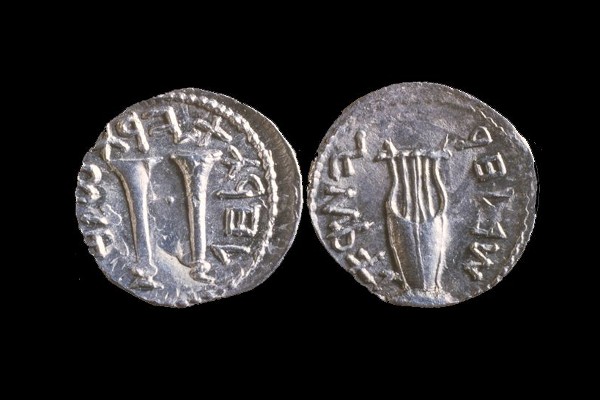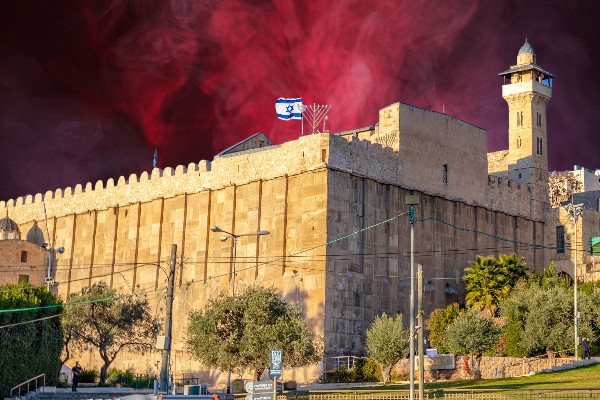Why were the Romans so shocked by the Jews rebuilding Hebron?
By Nosson Shulman, Licensed Tour Guide
“Afterwards Judah went forth with his brethren and attacked the Children of Esau… and (recaptured) Hebron” (1 Maccabees 5:65).
In 70 CE (circa) the Romans destroyed the Temple, and things were not looking good for the Jewish people.
Although the Jewish people had miraculously survived enslavement in Egypt and conquest by the Assyrians, Babylonians, Edomites (descendants of Esau), and Hellenic Greeks, contemporary observers assumed that this time, the Jews would not survive as a distinct nation and would assimilate into the larger Roman population.
After all, in ancient times the Romans destroyed the temples of the conquered nations and converted their new subjects to Roman paganism. This was because the Roman gods were apparently victorious over defeated local gods.
Moreover, in the same year that the Temple was destroyed, Hebron was also ruined (although the Cave of the Patriarchs built up by King Herod was left intact).
However, shortly after Hebron was destroyed, the Jews managed to return and rebuild this holy city. The Romans were shocked that even without the precious Temple in Jerusalem, the Jewish religion continued to flourish. Here was a people continuing to observe its commandments.
If Rome’s goal to convert the Jews was to be realized, a new strategy would be needed.
In 117 C.E., the Roman empire reached its zenith, and the Emperor Hadrian came to power. Many years later, Hadrian travelled to almost every province in his large territory, becoming the first Roman emperor to leave Italy during his reign.
Hadrian arrived in Jerusalem and saw a city in ruins (unlike Hebron, Jerusalem was not rebuilt). He ordered it to be rebuilt as a pagan city, with a temple to Jupiter at the exact location where the original Temple had stood.
And under penalty of death, the emperor forbade Jews from observing fundamental commandments such as circumcision and teaching Torah in public.
For the Jewish people, this was the last straw. Although the Romans were extremely powerful, ruthless in battle, firmly in control of Israel and possessing the greatest army the world had ever seen, a rebellion was planned to expel the Romans from the Holy Land in 132 BCE.
Led by a charismatic leader known as Simon Bar Kochba, the Jewish people were (almost) universally united under his leadership. They began digging a complex tunnel system underground for guerilla warfare, including under the majority of the Hebron Hills.

Coins minted during the Bar Kochba Revolt between 132-135 CE were found in abundance in the Hebron area. (Wikimedia Commons)
However, by natural means this would not be enough to defeat such a formidable army. They prayed that God would perform miracles on their behalf, and that is exactly what He did.
The two Roman Legions stationed in Israel were almost completely wiped out, after which Bar Kochba declared independence. The Romans then called on more troops from Egypt, Syria, and Arabia, and they too were massacred.
Hadrian, desperate to put down this rebellion, summoned his greatest general, who was stationed in faraway England. General Julius Severus brought an unprecedented 30-40 percent of the Roman army.
In the beginning, Severus suffered big losses. And for the first time in Roman history, when the Emperor wrote to the Senate, he pointedly omitted the customary greeting “I and the army fare well”.
These miraculous victories caused Bar Kochba to feel that his skills — rather than God’s help — were the reason for his army’s success. According to Jewish sources, Bar Kochba even said that God should not get involved to help or hurt him.
This attitude changed the tide of war, and the Jewish people began to suffer defeat after defeat, until the summer of 135 CE when the city of Beitar fell to the Romans. The Romans massacred hundreds of thousands of Jews in order to show the rest of the empire the consequences of rebelling.
In addition, hundreds of thousands of Jews were sold at the marketplace in Elonei Mamre (Northern Hebron). So many slaves were sold that just a small measure of barley could purchase four slaves.
As further punishment, meant to sever the Jewish connection to the land, the province of Judea was renamed Palestine (the name is Latin, not Arabic, and it was given 500 years before the advent of Islam).
Also, Jews were forbidden from living in any area where Jerusalem could be even seen in the distance. Most Jews moved to the Galilee, and it looked like the more than 2,000-year-old relationship between the Jews and Hebron was over.
Or was it?
To be continued . . .
Click for Part 1, Part 2 and Part 3 of this Hebron series.
Nosson Shulman is a journalist and Licensed Tour Guide in Israel specializing in Biblical tours. To allow tourists to experience Israel during the Corona era, he created the new hit Israel tour video series, which brings Israel to the home of viewers by simulating actual tours. To check out his free sneak preview tour videos, click here. To view sample tour itineraries or to inquire about private tour opportunities with a personalized itinerary on your next trip to Israel, click here.

